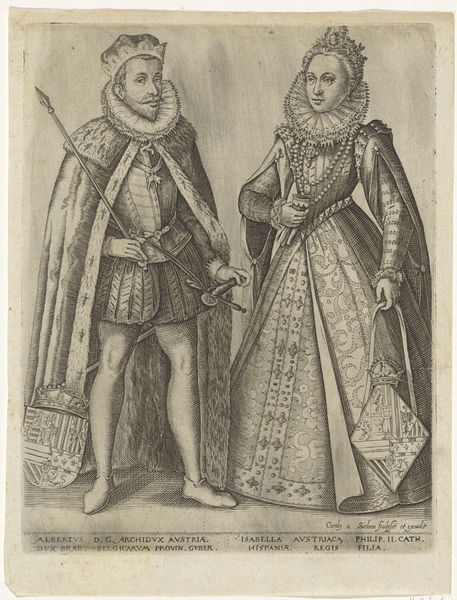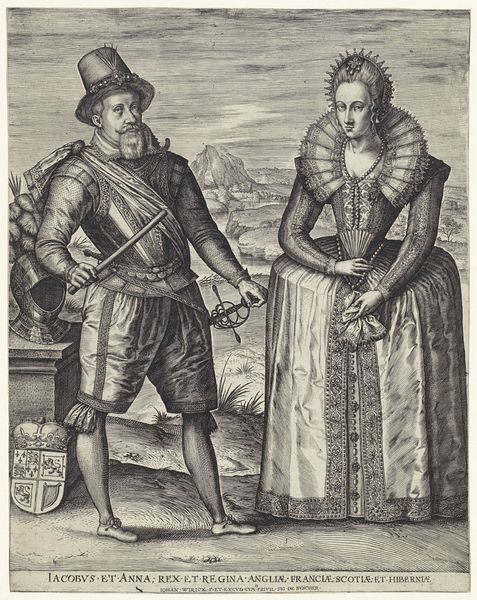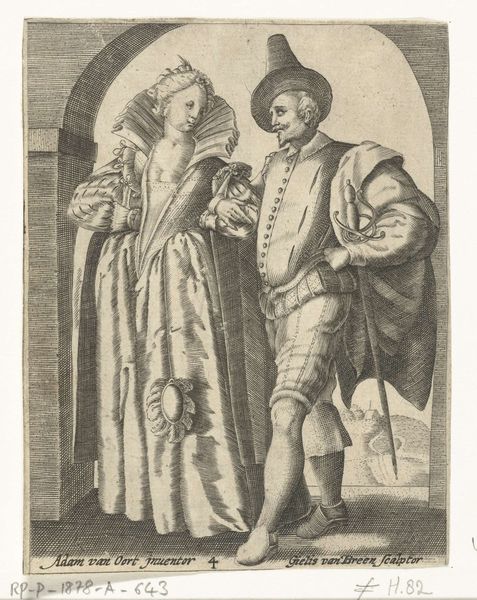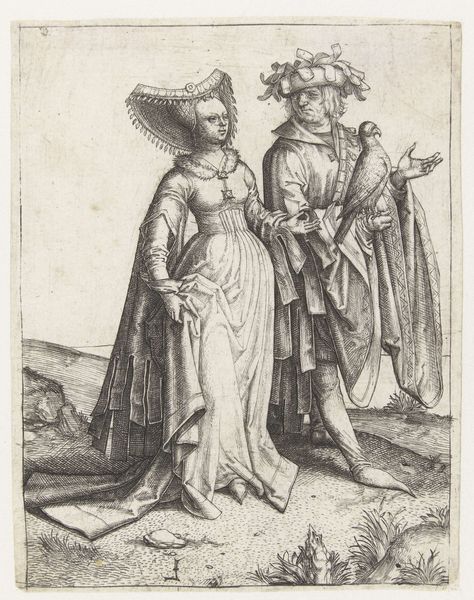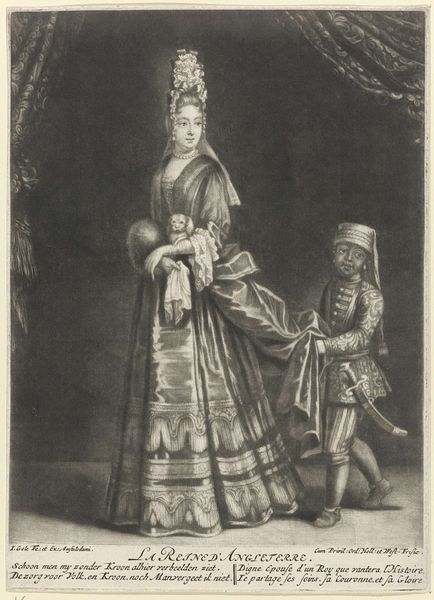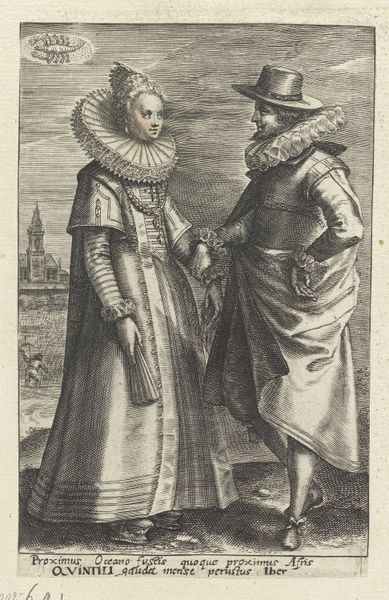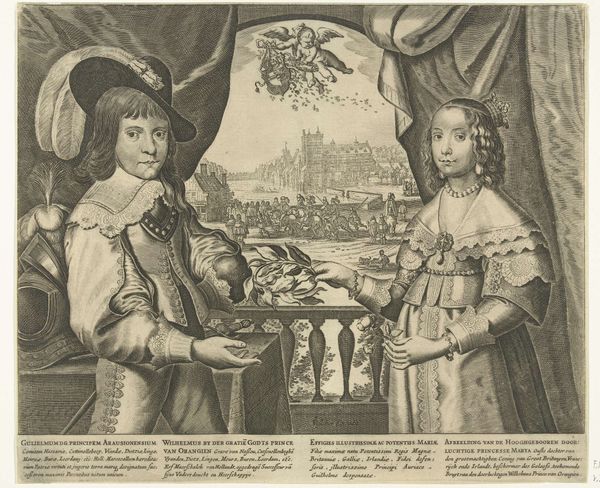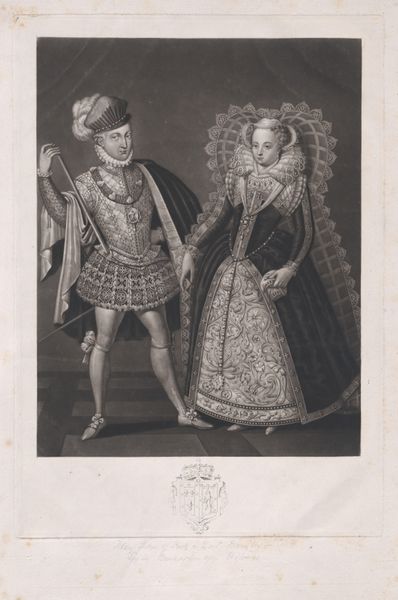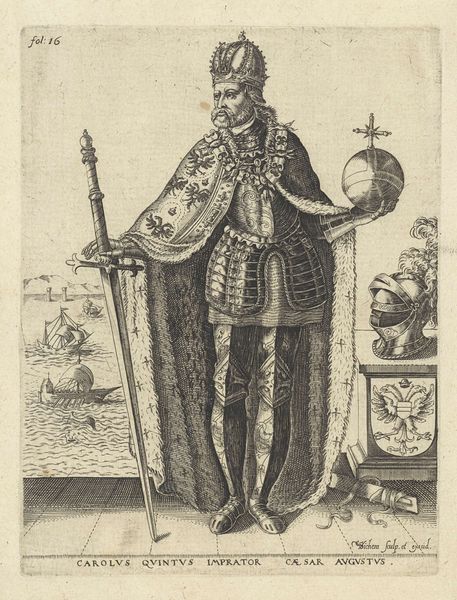
print, engraving
#
portrait
# print
#
old engraving style
#
figuration
#
11_renaissance
#
group-portraits
#
line
#
portrait drawing
#
history-painting
#
northern-renaissance
#
academic-art
#
engraving
Dimensions: height 205 mm, width 143 mm
Copyright: Rijks Museum: Open Domain
Editor: Here we have a print, "Portret van Albrecht en Isabella van Oostenrijk," created around 1600 by Jan (II) Collaert, currently at the Rijksmuseum. It's quite formal, stiff even. What strikes me are the incredible details in the garments, but I wonder, what’s your take on this piece? Curator: The meticulous rendering points to a significant investment of labor in both the creation of the image and the displayed materials. Consider the societal context of prints. They were, in their time, a mechanized form of art. Editor: So, like, proto-mass media? Curator: Precisely. It allowed for broader distribution of propaganda. Notice how Albrecht is rendered in full armor? It’s about portraying power, tied directly to military might, material strength and the skilled craftsmanship involved in creating his attire. And Isabella’s gown? Each thread was woven by someone, dyed with costly pigments. Think of the labor involved, the access to rare materials it represents! What do these choices of representing each portrait, signify for you? Editor: That wealth equals power...and status. The clothes and armor, made of specific costly materials, signal rank immediately. Is the print *itself* meant to convey something about power because it exists as a widely distributable medium? Curator: Yes, in the way a book printed using the printing press conveys authority, thanks to it's ability to reproduce content identically and rapidly. This piece offers a study of early modern power structures, displayed in their clothes, available on demand to their contemporaries, an image meant to communicate control as the means to obtain it becomes ever increasingly more available. Editor: Wow, I hadn’t thought about how the *production* of the image itself relates to their status and control. The artist, the materials, the clothing they wore, they all had the capacity to create very particular statements. Curator: Indeed, we need to appreciate how all of those working in production—artisans, tradesmen, and the artist himself — contributed to constructing the image.
Comments
No comments
Be the first to comment and join the conversation on the ultimate creative platform.
